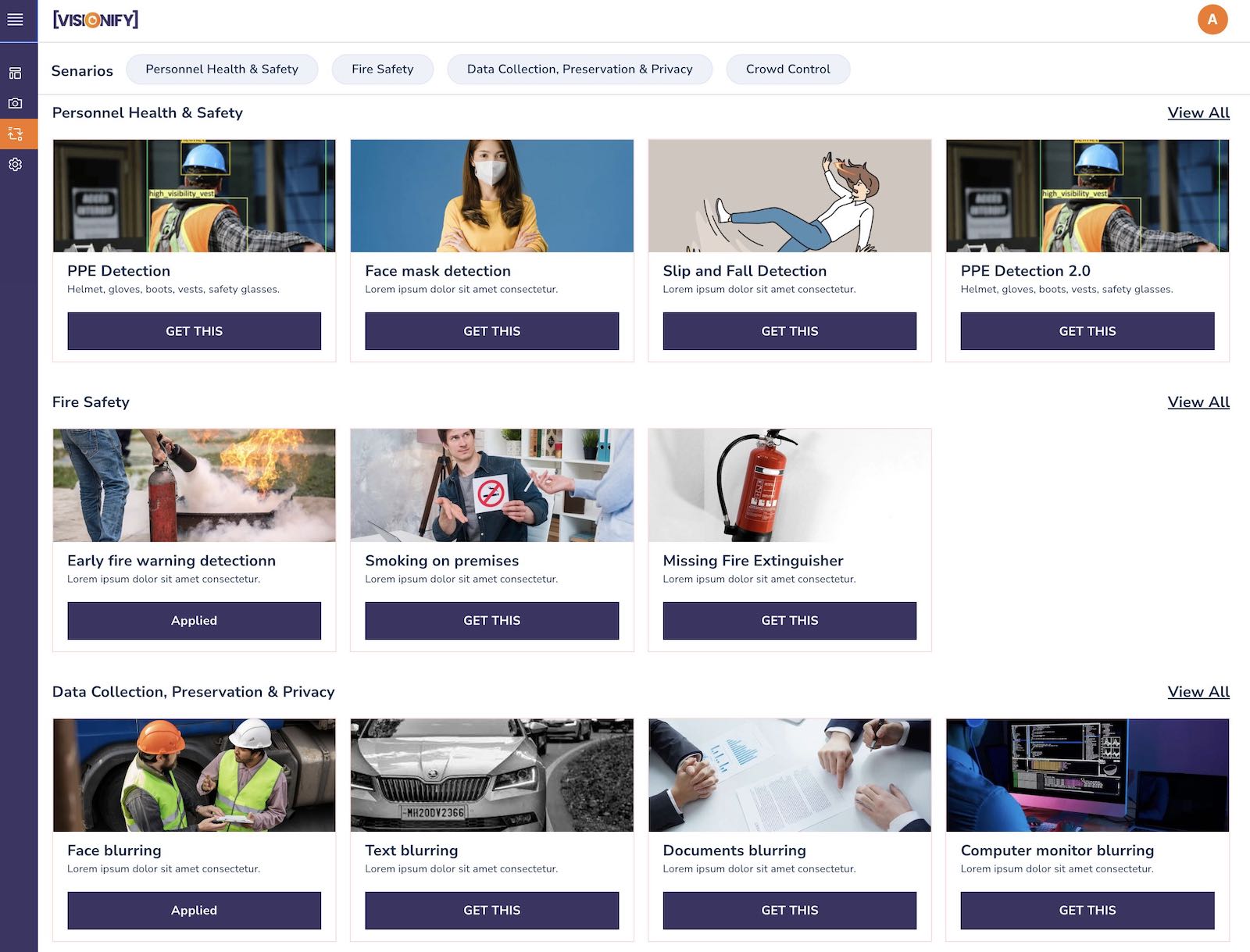VisionAI Apps for Workplace Safety. Pretrained & Ready to deploy.
Documentation: https://docs.visionify.ai
VisionAI offers a collection of pre-trained apps tailored for workplace safety use cases. Developed by Visionify as part of the Workplace Safety suite, VisionAI is ready for production deployment and accessible through web-based GUI.
- A Platform to run AI scenarios for CCTV cameras.
- Choose from the list of scenarios here for workplace safety & building security.
- Migrate CCTV feeds to the cloud. Manage cameras, choose AI scenarios and configuring alerting from cloud.
Key features of VisionAI include:
-
No hardware installation: Works with any IP/security cameras using RTSP streams. No need to install any new cameras, sensors, or other hardware.
-
User-friendly: Easy-to-use web interface for managing cameras and associated apps, catering to both technical and non-technical users.
-
Production-ready: Apps are trained on diverse, carefully curated datasets from industrial and academic sources, ensuring out-of-the-box functionality.
-
Customizable: Allows app customization and model fine-tuning with a flexible architecture based on the NVIDIA Triton server. Refer to customization documentation for more details.
-
Integrations: VisionAI currently integrates with Azure Event hubs, Redis PubSub for reports, alerts and notifications. We have roadmap plans to add support for other message brokers as well.
VisionAI offers a variety of workplace health and safety scenarios, with continuous development of new use cases. View the complete list of VisionAI Apps here. If you require a specific scenario not listed here, feel free to contact us.
Our primary focus is on workplace health and safety models, but we are expanding our scope to include Quality Inspection, Food Safety/Debris Detection, and more. These additional scenarios are available to customers on a case-by-case basis.
- Install VisionAI through
PyPI:
$ pip install visionai- Update to the latest version, if already installed:
$ pip install --upgrade --force-reinstall visionai- Initialize VisionAI to download and install dependencies (Docker, Pytorch, NVIDIA Triton, etc.):
$ visionai init- Upon successful initialization, you should be able to see the following services running:
| Service | Port | Purpose |
|---|---|---|
Web UI |
http://localhost:3001 |
VisionAI Web-app |
Web API |
http://localhost:3002 |
VisionAI API service |
Triton HTTP |
http://localhost:8000 |
Triton Model server (http) |
Triton GRPC |
grpc://localhost:8001 |
Triton Model server (grpc) |
Triton Metrics |
http://localhost:8002 |
Triton Model metrics server (prometheus) |
Redis |
redis://localhost:6379 |
Redis server, currently supports PUBSUB |
- VisionAI also supports a web-based option for managing cameras, scenarios and pipeline. You can run the following command to start the web-based GUI. Once the web-based GUI is started, you can access it at http://localhost:3001.
$ visionai web start
Web service API available at: http://localhost:3002
Web app available at: http://localhost:3001- This would show an initial screen similar to this:
- You can manage cameras, scenarios, pipelines, see events etc., directly on the web-app. The web-app is running your own local compute instance. All the data is saved in your machine, and it is persistent as long as VisionAI application is not uninstalled.
Congratulations! You have successfully configured and used VisionAI toolkit. You can also browse through our scenarios section to understand different use-cases that are supported currently. If you have a need for a scenario, do not hesitate to submit a request here.


